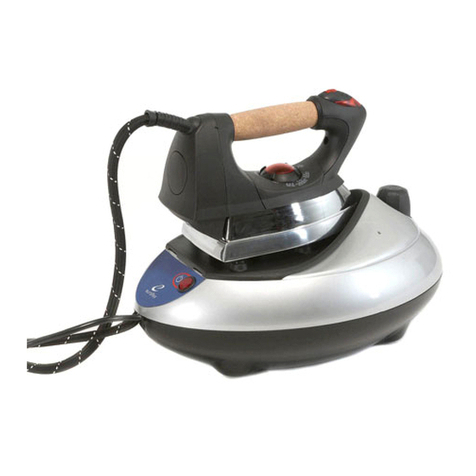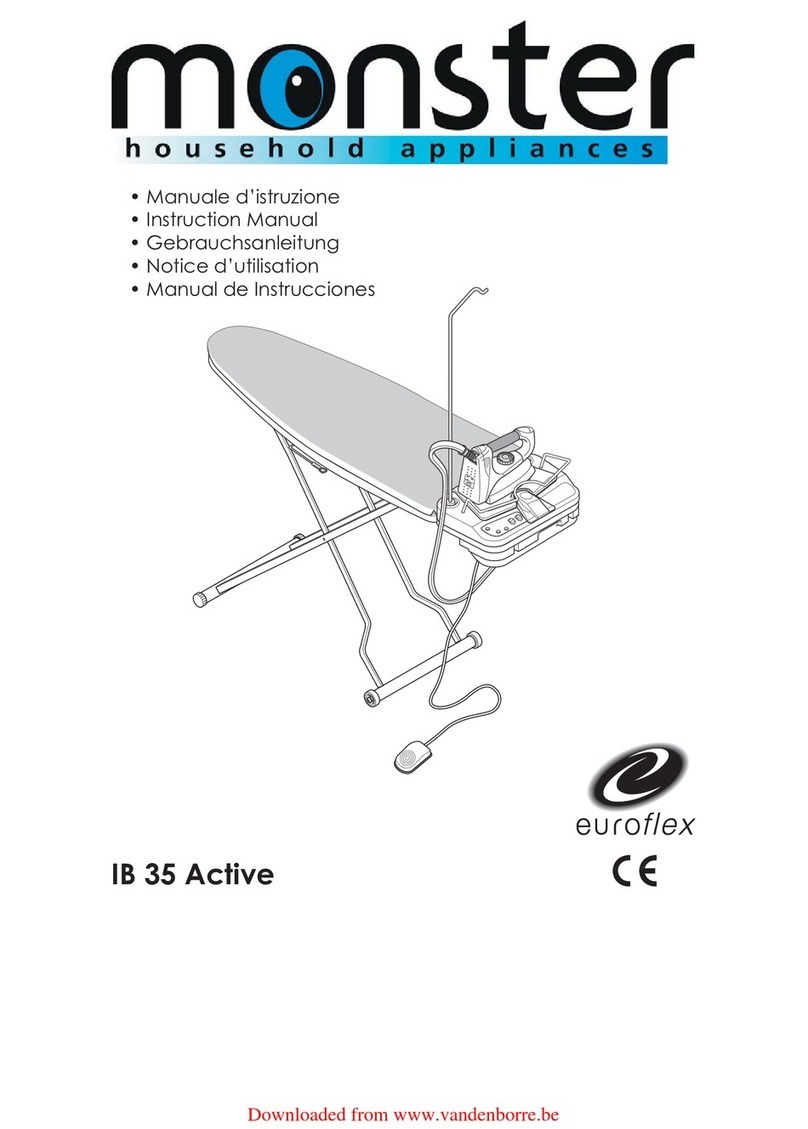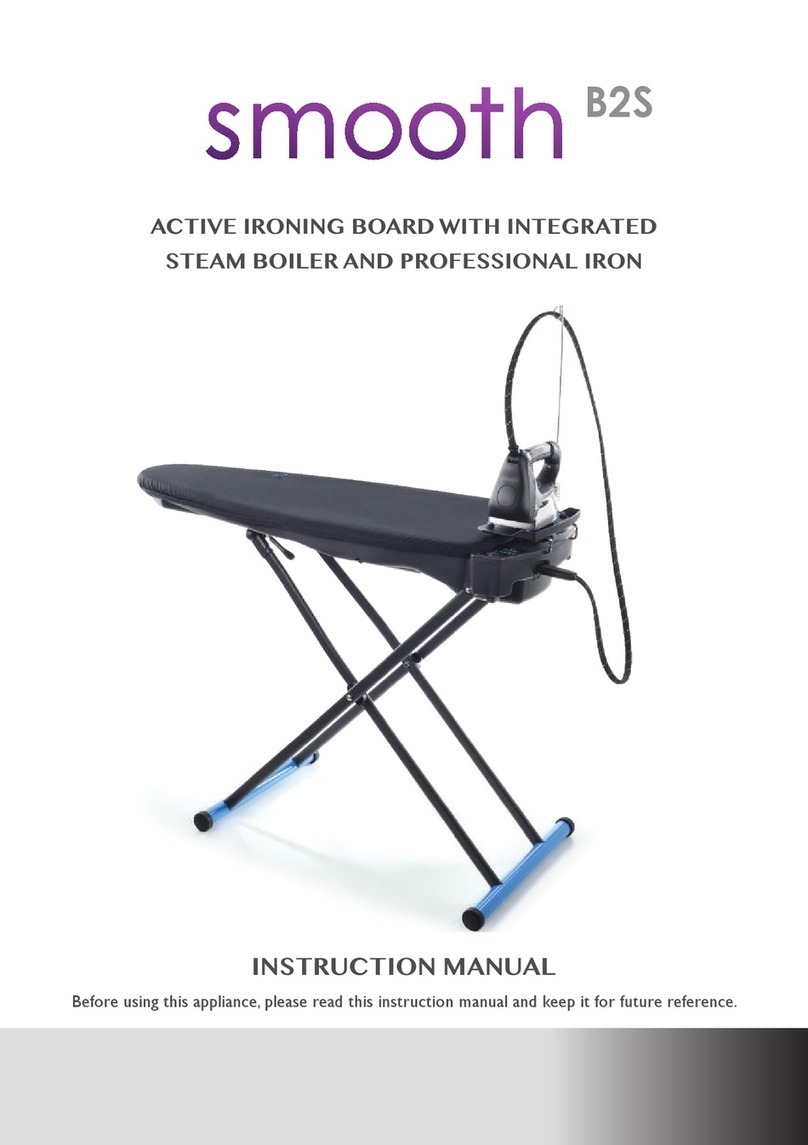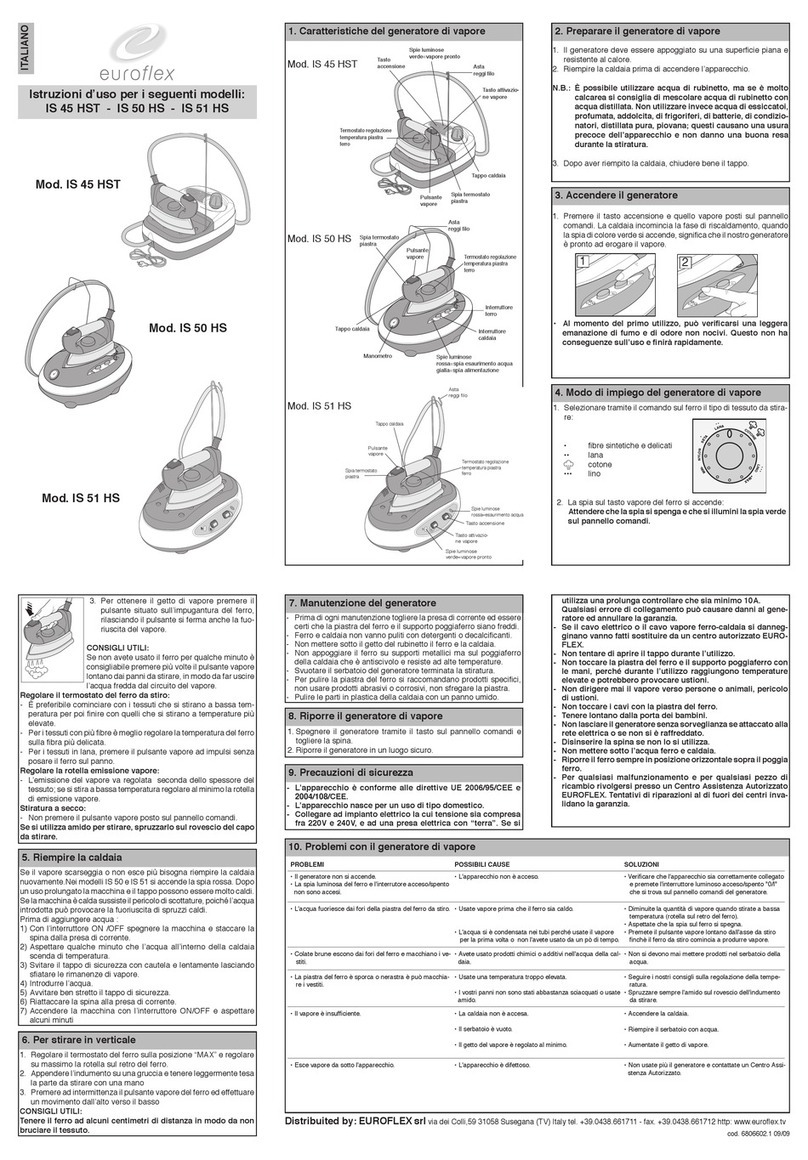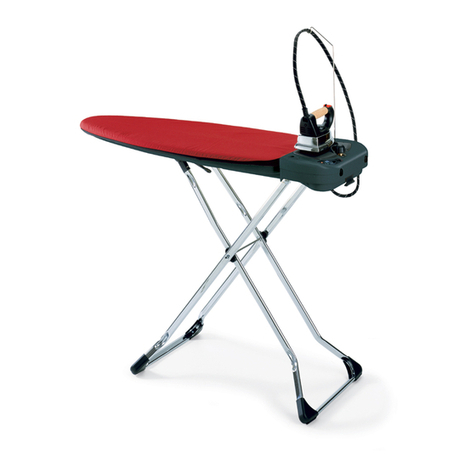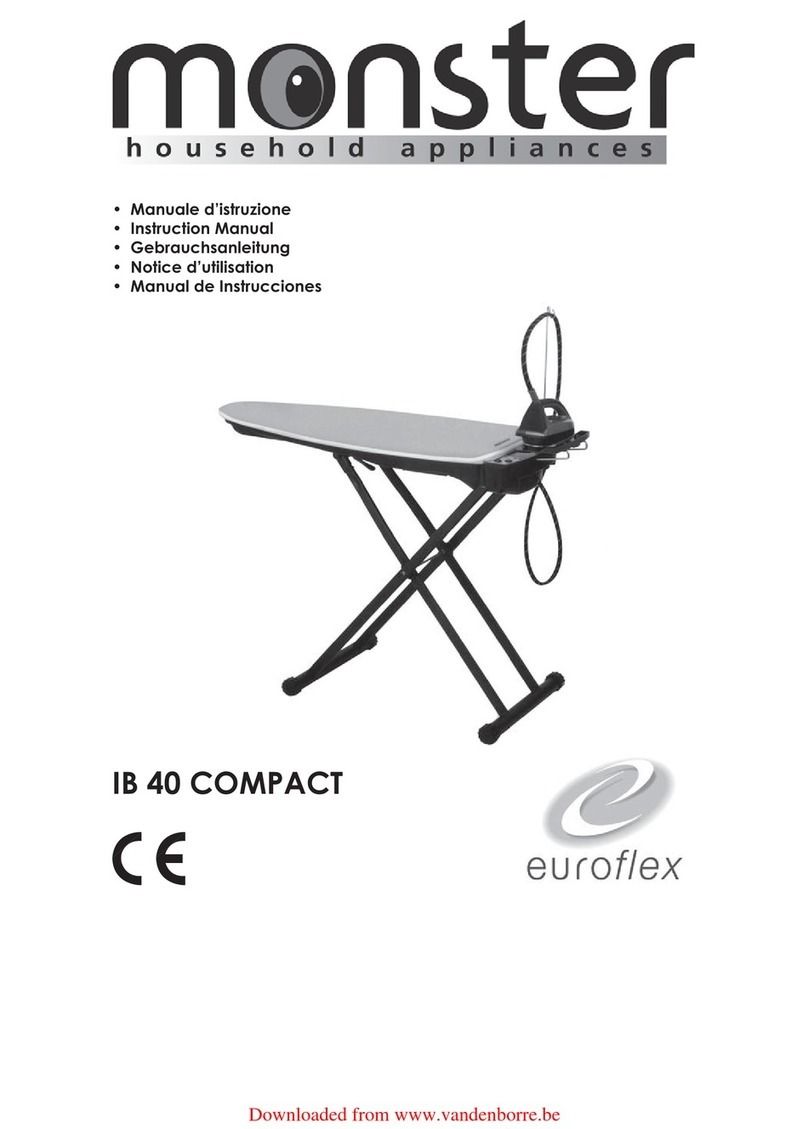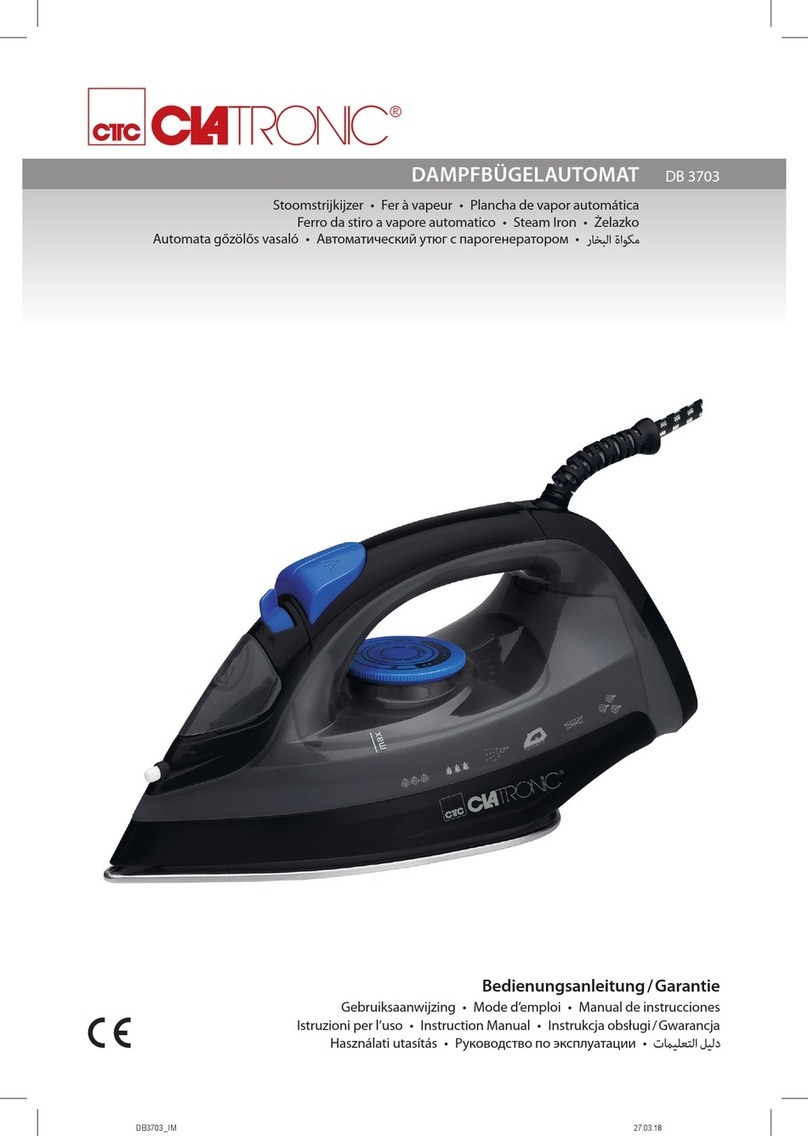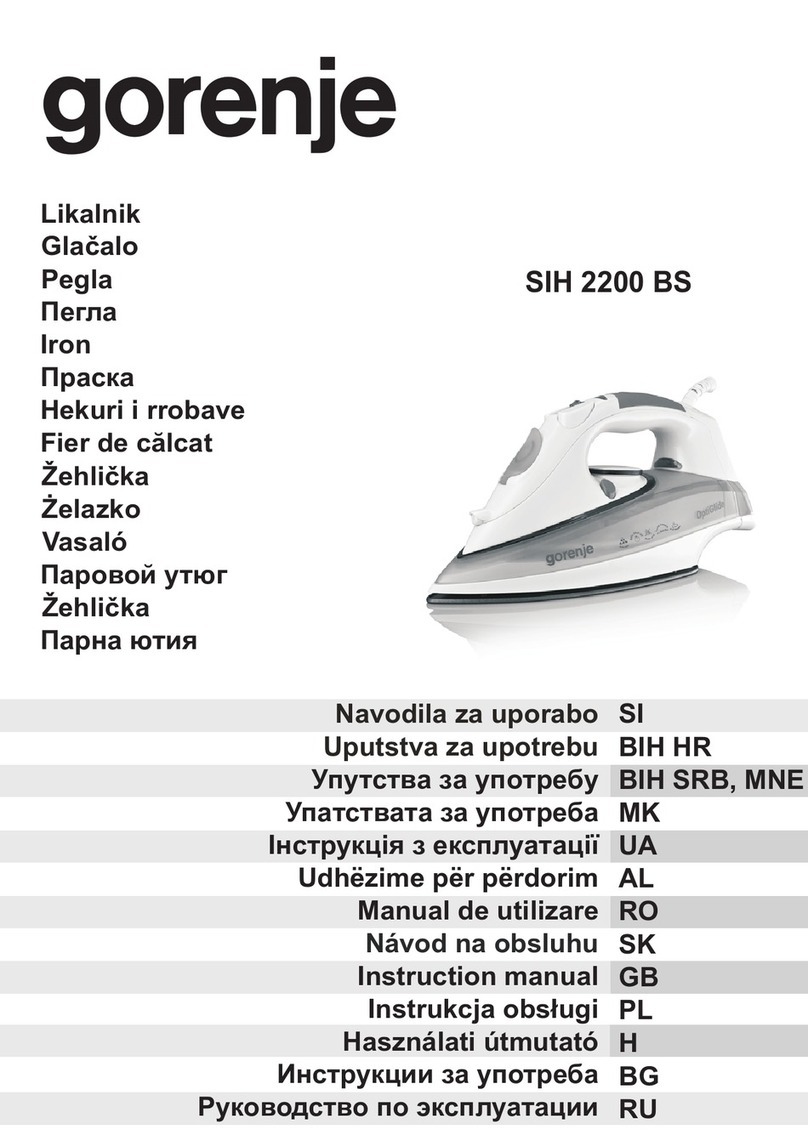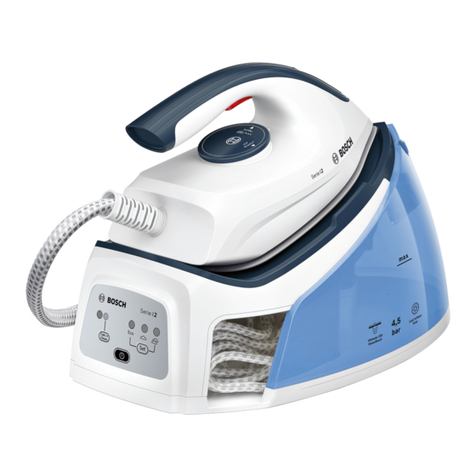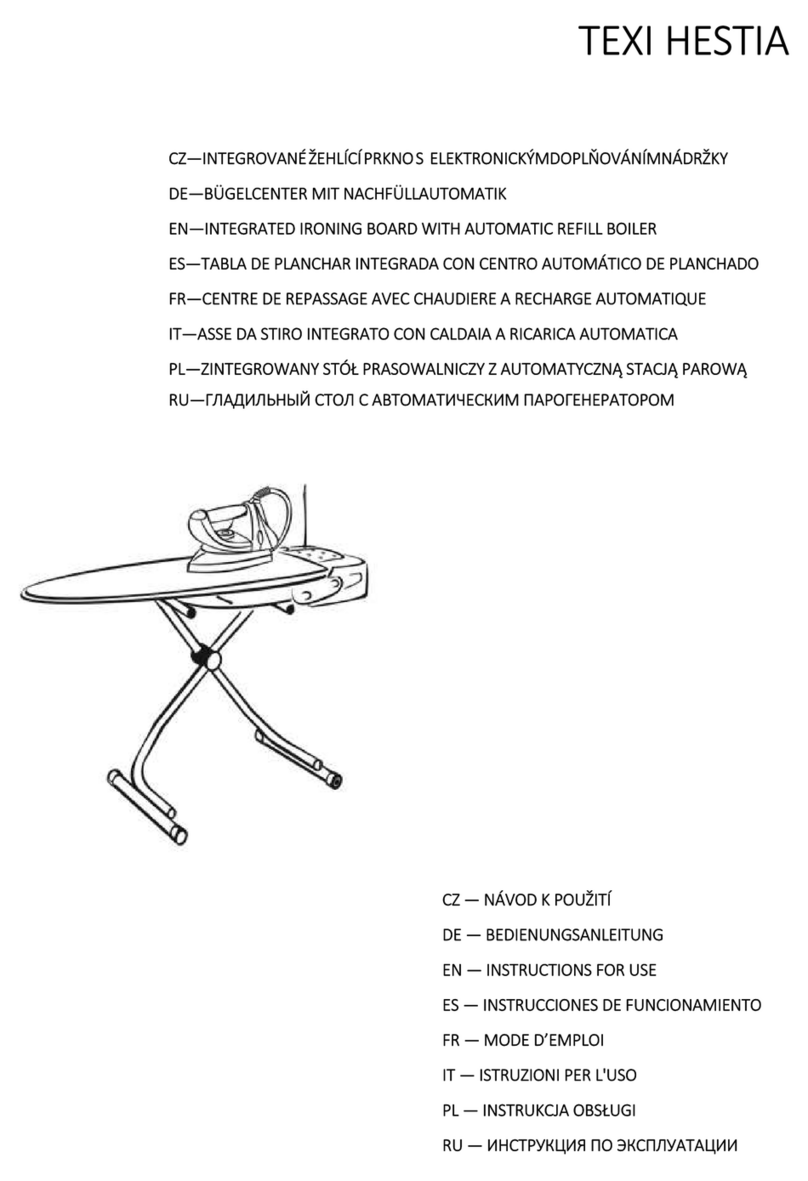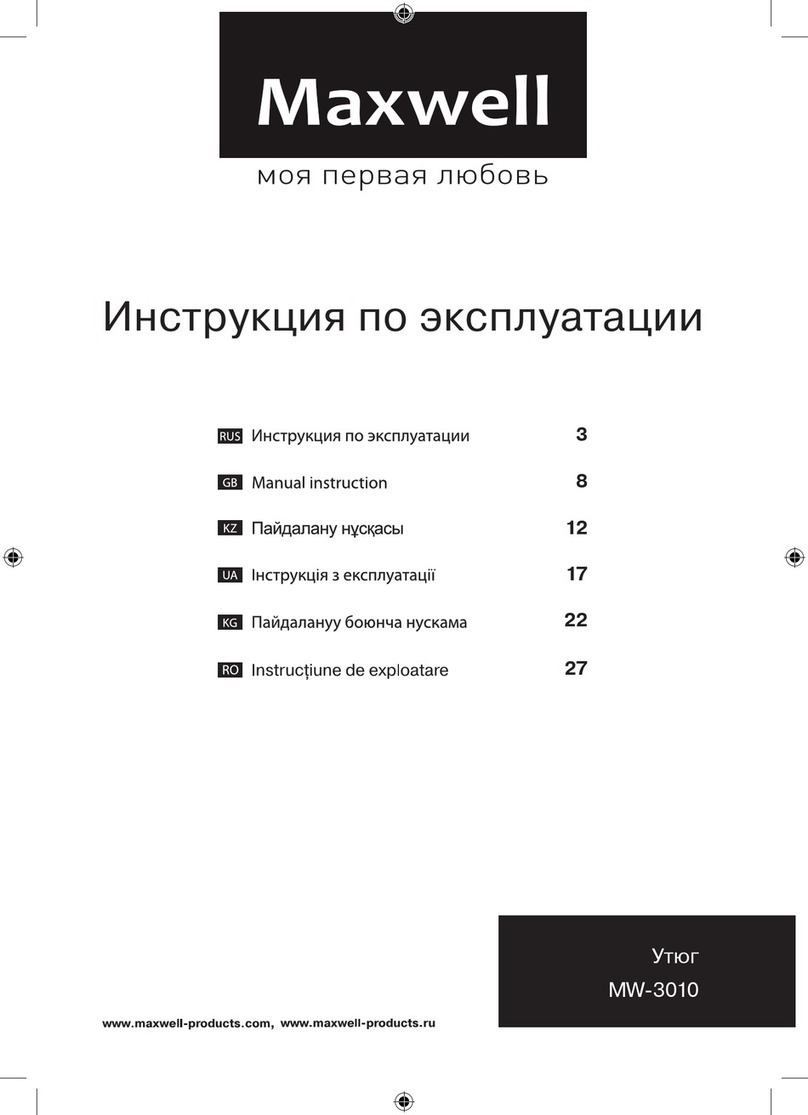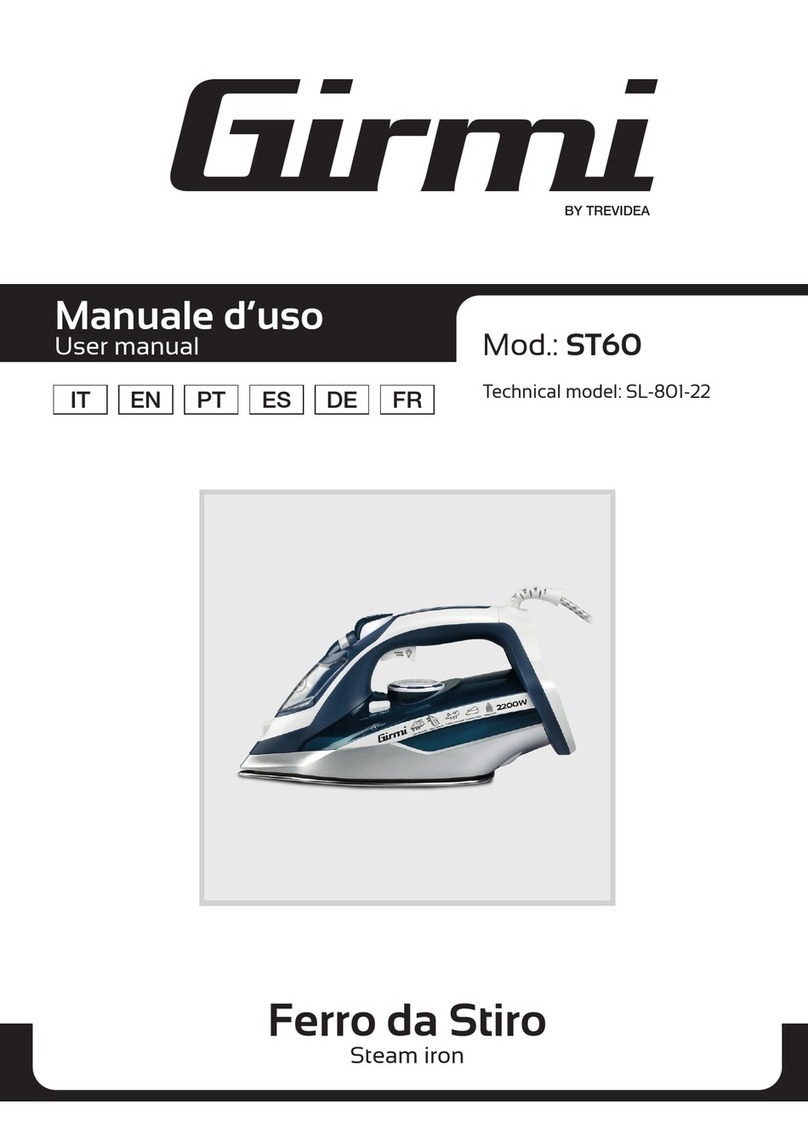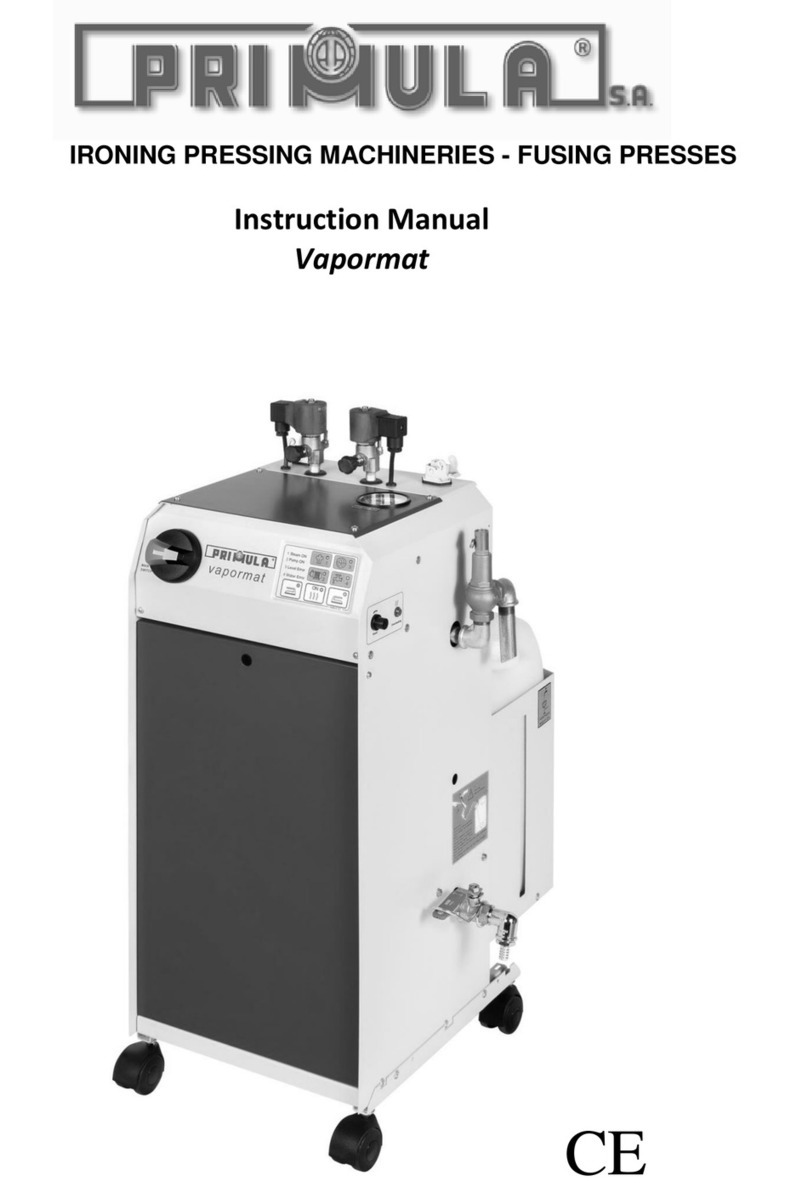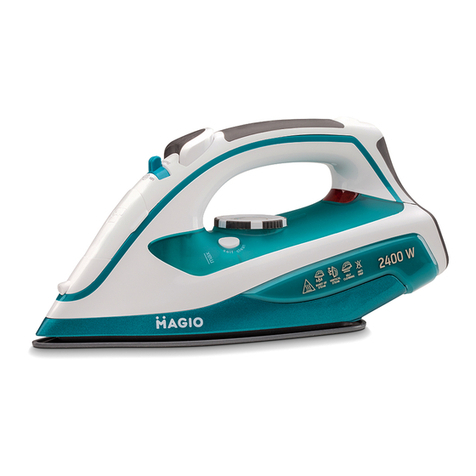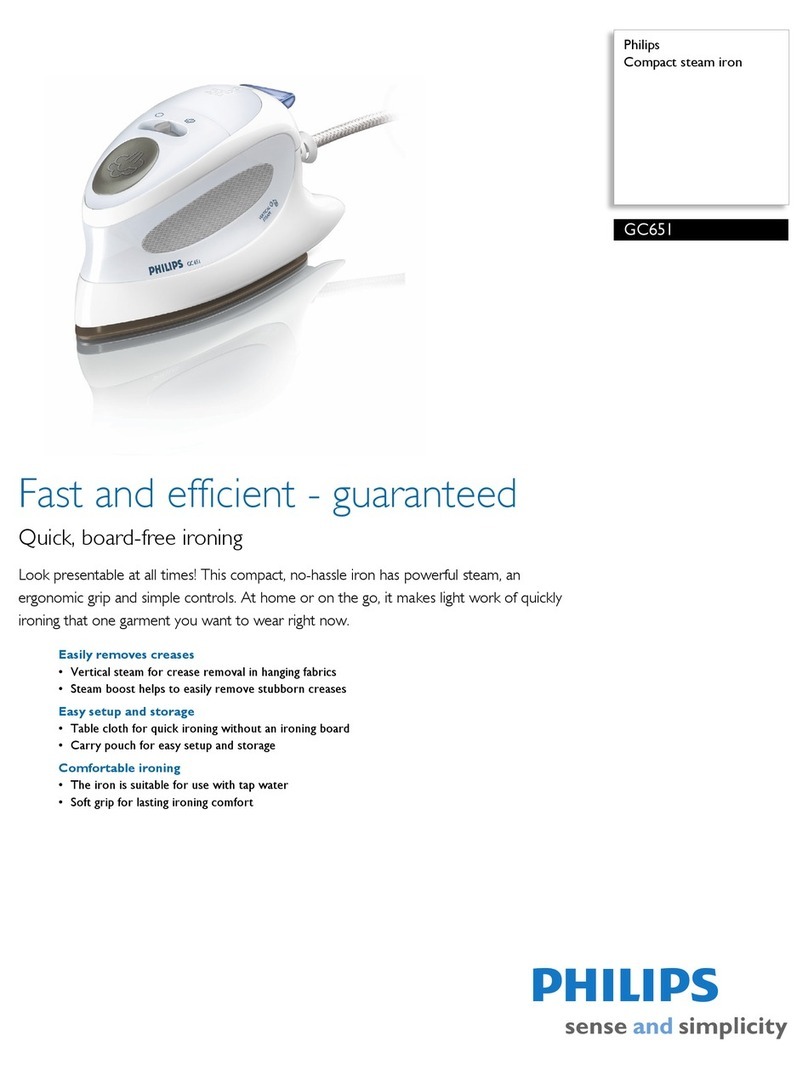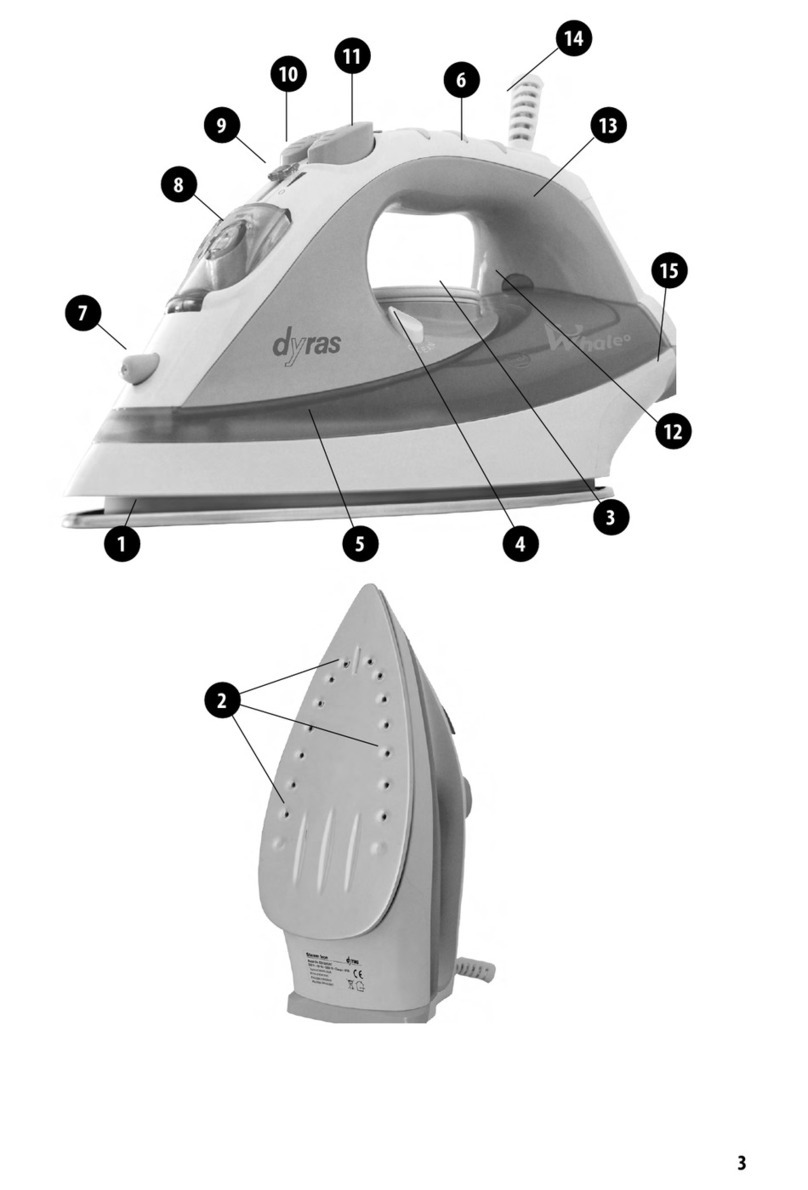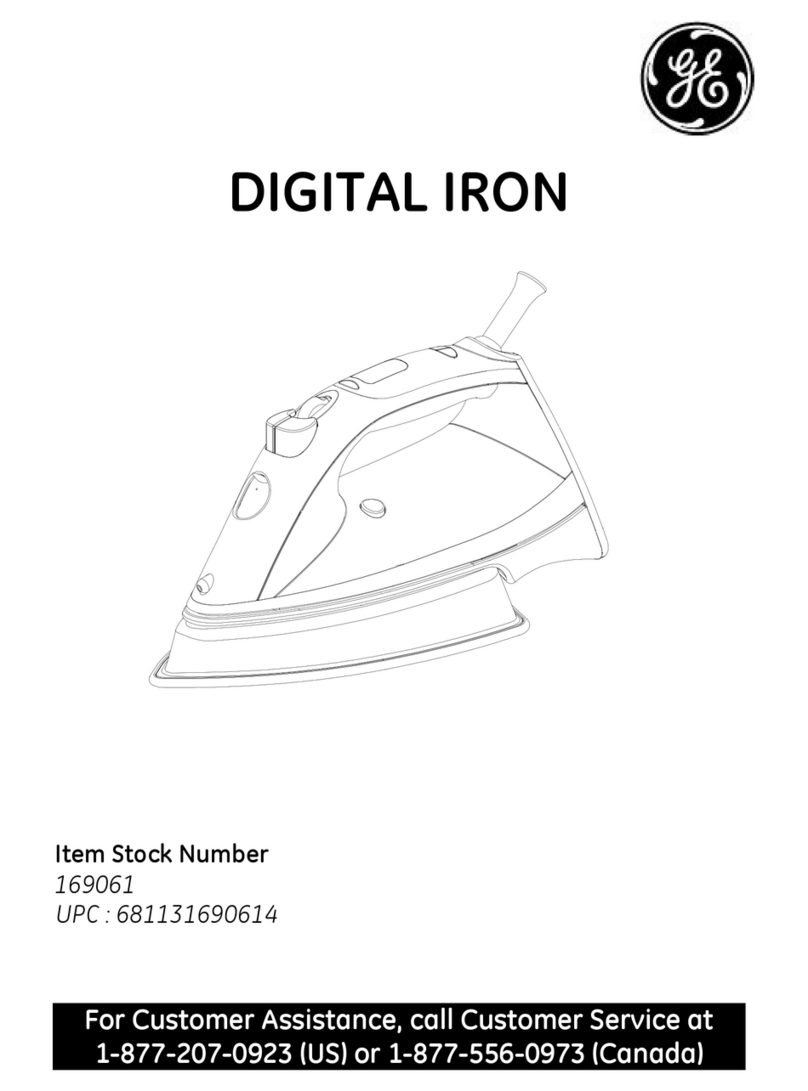
10
Per stirare a vapore
Se l’apparecchio viene utilizzato per la prima volta in assoluto, posizionare la manopo-
la del termostato (5) sulla posizione “nylon”; attendere cinque minutu e premere poi
ripetutamente il pulsante vapore del ferro da stiro (4), sino a provocare la fuoriuscita di
gocce d’acqua. Strofinare delicatamente la superficie della piastra con un panno pulito.
Ruotare poi la manopola del termostato (5) fino a raggiungere la posizione desiderata.
Quando la spia luminosa del ferro (11) si spegnerà, potrete iniziare a stirare. (Durante la
stiratura, questa spia si accende e si spegne; è il suo normale funzionamento). Ogni vol-
ta che si inizia a stirare o dopo una lunga pausa nella stiratura, dirigere il primo getto di
vapore verso il pavimento, poiché il vapore, ormai allo stato liquido, presente all’interno
del cavo collegato al ferro (cordone), residuo della stiratura precedente, potrebbe goc-
ciolare sul tessuto, e quindi macchiarlo.
Nel corso della stiratura a vapore, tutti i capi di abbigliamento possono essere stirati rego-
lando la manopola del termostato da ( ) fino al max. Il fattore determinante per stabilire
la quantità di vapore da erogare è che, in pratica, ogni getto di vapore dovrebbe essere
sempre ben visibile ed umido; si dovrebbe in ogni caso testare su ogni tipo di tessuto.
Sono molto importanti la temperatura ed il grado di umidità dell’ambiente.
In generale,
in estate si preferiscono temperature basse, mentre, al contrario, per l’inverno sono indicate
temperature alte.
Per spruzzare vapore dal ferro da stiro, premere sempre il pulsante vapore (4). Abitual-
mente, questo pulsante viene premuto e rilasciato, premuto e rilasciato. Se siete in pre-
senza di un capo di abbigliamento “difficile” da stirare potrete ottenere un getto di
vapore continuo tirando indietro, e quindi “bloccando” il pulsante del vapore (4). ATTEN-
ZIONE: durante le fasi preparatorie, questo pulsante specifico non deve essere “blocca-
to”, altrimenti inizierebbe a fuoriuscire acqua dal ferro da stiro.
AVVERTENZE
• Appoggiare il ferro da stiro caldo sulla base d’appoggio resistente al calore (2).
• Evitare il contatto della piastra del ferro da stiro con oggetti che potrebbero causare
dei graffi sulla stessa (ad esempio una cerniera lampo).
• Non effettuare operazioni di pulizia della piastra utilizzando materiali ruvidi.
• Quando si esegue la prima stiratura, dal ferro potrebbe uscire del fumo o del vapore
non completamente pulito. Dirigete pertanto il primo getto di vapore verso il pavimen-
to, per non macchiare il tessuto.
Se l’apparecchio non viene utilizzato per un lungo periodo di tempo, prima di riutiliz-
zarlo, inviate il getto di vapore, per circa un minuto, in direzione del pavimento.
Stiratura verticale
Potete stirare i vestiti posti sugli appendiabiti erogando vapore dall’alto in basso,
appoggiando la piastra del ferro sui capi di abbigliamento. Stirando capi delicati,
mantenere la piastra ad una distanza di alcuni centimetri da essi. Non vaporizzare
mai gli abiti quando sono indosso a persone.
• Dopo aver stirato, spegnere l’apparecchio.
• Disinserire la spina dalla presa di corrente. Attendere alcuni minuti, finché il ferro si
raffredda.
• Legare in maniera salda il ferro con l’apposita cinghia (13).
• Riporre l’apparecchio in posizione orizzontale.
